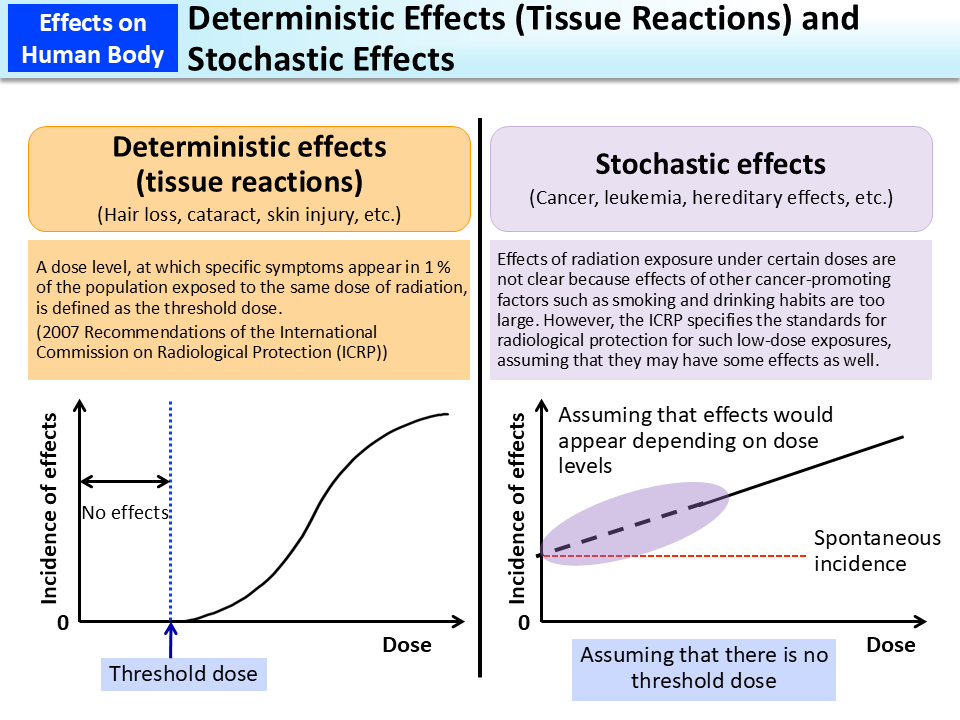Deterministic Effects (Tissue Reactions) and Stochastic Effects
One of the characteristics of the deterministic effects (tissue reactions) is the existence of the threshold dose, which means that exposure to radiation under this level causes no effects but exposure to radiation above this level causes effects. Radiation exposure above the threshold dose causes deaths or degeneration of a large number of cells at one time and the incidence rate increases sharply.
On the other hand, in radiological protection, it is assumed that there is no threshold dose for stochastic effects. Under this assumption, the possibility that radiation exposure even at extremely low doses may exert some effects can never be eliminated. It is difficult to epidemiologically detect stochastic effects due to radiation exposure at low doses below the range of 100 to 200 mSv, but the ICRP specifies the standards for radiological protection for low-dose exposures, assuming that effects would appear depending on dose levels (linear dose-response relationship) (p.165 of Vol. 1, “Biological Aspect”).
When assessing cancer risks due to low-dose exposures, results of the epidemiological studies of atomic bomb survivors in Hiroshima and Nagasaki have mainly been used. It is known that cancer risks increase almost linearly as exposure doses increase above approx. 100 mSv (p.117 of Vol. 1, “Relationship between Solid Cancer Deaths and Doses”). However, it is not clear whether risks also increase linearly in the case of radiation exposure at doses below 100 mSv (p.166 of Vol. 1, “Disputes over the LNT Model”). Additionally, it is shown that risks increase quadratically in tandem with doses above approximately 1,000 mSv (p.118 of Vol. 1, “Dose-response Relationship of Radiation-induced Leukemia”). The WHO and UNSCEAR assess risks by applying the linear-quadratic dose response model.
Furthermore, experiments using animals or cultured cells have revealed that comparing high-dose exposures in a short time as experienced by atomic bomb survivors and low-dose exposures over a long period of time, the latter poses lower risks even when the total exposure doses are the same (p.116 of Vol. 1, “Cancer-promoting Effects of Low-dose Exposures”).
(Related to p.91 of Vol. 1, “Cell Deaths and Deterministic Effects (Tissue Reactions)”)
- Included in this reference material on March 31, 2013
- Updated on March 31, 2024

